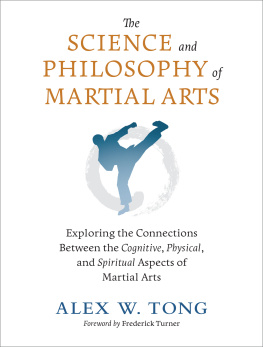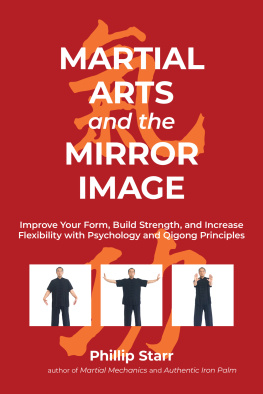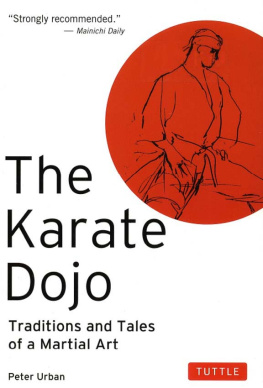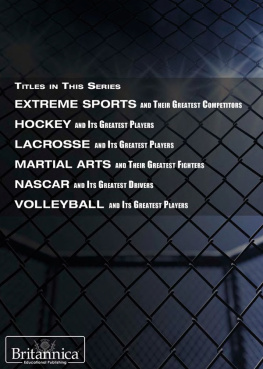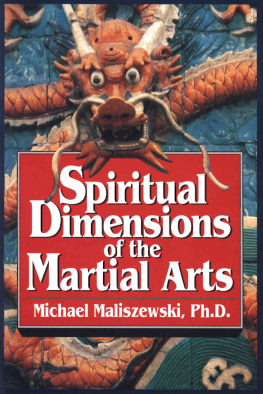
Copyright 2022 by Alex W. Tong. All rights reserved. No portion of this book, except for brief review, may be reproduced, stored in a retrieval system, or transmitted in any form or by any meanselectronic, mechanical, photocopying, recording, or otherwisewithout written permission of the publisher. For information contact Blue Snake Books c/o North Atlantic Books.
Published by Blue Snake Books, an imprint of North Atlantic Books
Huichin, unceded Ohlone land aka Berkeley, California
Cover art by Caitlyn Tong
Cover design by Howie Severson
Book design by Happenstance Type-O-Rama
The Science and Philosophy of Martial Arts: Exploring the Connections Between the Cognitive, Physical, and Spiritual Aspects of Martial Arts is sponsored and published by North Atlantic Books, an educational nonprofit based in in the unceded Ohlone land Huichin (aka Berkeley, CA) that collaborates with partners to develop cross-cultural perspectives, nurture holistic views of art, science, the humanities, and healing, and seed personal and global transformation by publishing work on the relationship of body, spirit, and nature.
North Atlantic Books publications are distributed to the US trade and internationally by Penguin Random House Publishers Services. For further information, visit our website at www.northatlanticbooks.com.
PLEASE NOTE: The creators and publishers of this book disclaim any liabilities for loss in connection with following any of the practices, exercises, and advice contained herein. To reduce the chance of injury or any other harm, the reader should consult a professional before undertaking this or any other martial arts, movement, meditative arts, health, or exercise program. The instructions and advice printed in this book are not in any way intended as a substitute for medical, mental, or emotional counseling with a licensed physician or health-care provider.
Library of Congress Cataloging-in-Publication Data
Names: Tong, Alex W., 1952 author.
Title: The science and philosophy of martial arts : exploring the
connections between cognitive, physical, and spiritual aspects of
martial arts / Alex W. Tong ; foreword by Frederick Turner.
Description: Berkeley, CA : Blue Snake Books, [2022] | Includes
bibliographical references and index. | Summary: An exploration of the
physical, mental, and spiritual components of martial arts that
integrates contemporary sports psychology, kinesiology, and
neuroscience Provided by publisher.
Identifiers: LCCN 2021038681 (print) | LCCN 2021038682 (ebook) | ISBN
9781623176655 (Trade Paperback) | ISBN 9781623176662 (eBook)
Subjects: LCSH: Martial arts. | Martial artsPhilosophy.
Classification: LCC GV1101 .T6 2022 (print) | LCC GV1101 (ebook) | DDC
796.8dc23
LC record available at https://lccn.loc.gov/2021038681
LC ebook record available at https://lccn.loc.gov/2021038682
North Atlantic Books is committed to the protection of our environment. We print on recycled paper whenever possible and partner with printers who strive to use environmentally responsible practices.
Opinions expressed in this book are solely those of the author. They do not purport to reflect the views of the American Amateur Karate Federation (AAKF) or its members. Discussions throughout the book have cited current theories and practice in human physiology and clinical psychology. They are not intended as medical advice. Readers should consider these references only as informational to the raised subject matter.
To my parents, Robert and Agnes.For their love and sacrifice,And for giving me the learning opportunities that they did not have.
Acknowledgments
This book is very much the product of community, friends, and family. Accolades are due for the North Atlantic Books editorial and production staff, who turned loose pages into a highly professional final product. In particular, my special thanks go to Shayna Keyles for her insightful editing, Janelle Ludowise for her guidance throughout production, Christopher Church for the incredibly astute copyedits, and Jasmine Hromjak for the gorgeous cover design. I also thank Karen Davis for her meticulous proofreading.
I thank Anjali Krishnan, PhD, Suresh Lakhanpal, MD, Susan Radtke, Professor Frederick Turner, and Bob Young for their valuable comments; Nicole Tong for legal counsel; Alexander Tong as sparring partner; Caitlyn Tong for the amazing graphic illustrations; and Caitlyn and Maddie Tong for their keen eyes as photographers. My appreciation goes to Sander Neggo sensei for sharing his valuable out-of-print Samurai magazines. The contents provided indispensable background on the tenor of martial arts practice in the 1970s.
As the very idea of writing a book turned all-consuming, my children, Nicole, Alexander, Caitlyn, and Maddie, inspire by their youthful exuberance, self-assuredness, and sense of adventure, for which I am eternally proud and thankful.
I also thank the American Amateur Karate Federation Technical Committee members, Mahmoud Tabassi, Richard Kageyama, and Albert Cheah for their friendship and encouragements; and ydansha in my dj, Tuan Huynh, Anjali Krishnan, Lanny Little, Vincent May, J. Robert Todd, Frederick Turner, Attila Vari, and Adam Blanchard, MD, who through their enthusiasm and inquisitiveness spur the process of reflection and deeper understanding.
The highest accolades are extended to the teachers and mentors throughout my lifes journey as a martial artist and research scientist. These role models, in particular Hidetaka Nishiyama sensei and Dr. Marvin J. Stone, practice their craft with passion and lead by example, impressing that the circle of life is much about the passing of past generations knowledge to the next.
Foreword
The Science and Philosophy of Martial Arts is an amazing work. It is surely the most comprehensive book yet written on the art of karate. But it is more than comprehensive: it does not just collect the many aspects of karate practice and theory, but points to a larger and more universal vision of the human body and spirit. Though a useful handbook on every aspect of kihon (basics), kata (form), and kumite (sparring) in karate, it is also an argument that dissolves ancient conflicts between spiritual and scientific knowledge, between East and West, and between the arts of the body and the arts of the mind. Throughout the book, the concept of emergence, where a new level of order arises out of the competitive interaction between the parts to generate a whole, is implicit in every chapter.
Teachers of karate need to read the careful systematic research into the biology and cultural history of the body in karate. It deepens and confirms what contemporary sensei know from their experience in learning and teaching this art. It is the chapters on the spirit that are perhaps most exciting, especially the discussion of the dantians, the qi focus centers of the body. Tong is a distinguished medical biologist and can translate between bioelectric and Taoist descriptions of how the body works.
This work of translation is also cultural and political. The elegant vocabulary of martial arts theory is echoed by Western bodily metaphors and vocabulary for moral, psychological, and emotional qualities in battleheart, courage (as in the French coeur, heart), guts, bowels of compassion, having the stomach for a fight, having backbone, second wind, spirited defense, breathing space, level-headedness, having the neck (self-assurance) or kidney (inner strength) to do something, putting your shoulder to the wheel, and so on. This unanimity confirms the universal validity of the teaching. One would surely find the equivalent in Swahili and Quechua.
Next page
